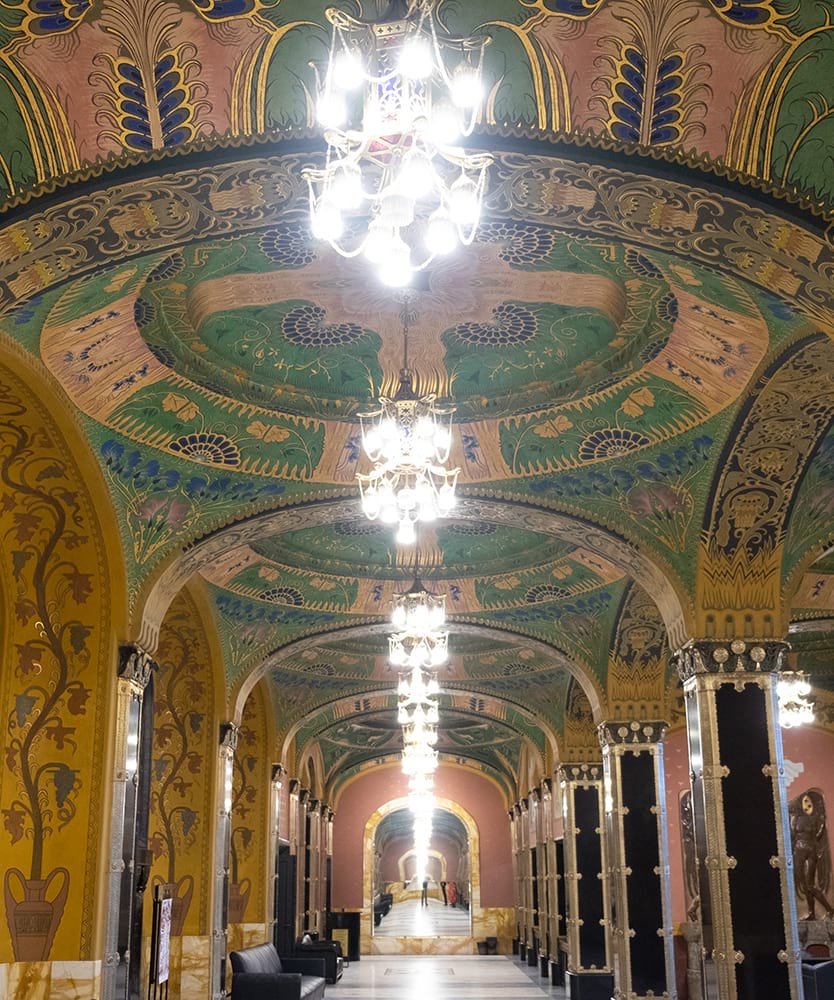Palace of Culture from Târgu Mureș
Victoriei Square, no. 1, Târgu Mureș
The Palace of Culture in Târgu Mureș is a representative work of the local and Hungarian Art Nouveau style, a European-level value within the heritage of this architectural style. The designers of the Palace were the architects Marcell Komor and Dezső Jakab. The Town Hall (1905–1908) and the Palace of Culture (1908–1913) were two buildings designed by the Bureau Komor and Jakab, which still define the identity of the city of Târgu Mureș today.
The iconographic program and the exterior and interior decoration were the result of the work of the members of the Gödöllő Art Colony. The so-called pearl of the palace is the Hall of Mirrors, located on the first floor. The twelve stained glass windows of outstanding value were made in Róth Miksa's workshop in 1913, after designs by Toroczkai Wigand Ede and Nagy Sándor. The stained glass windows on the left represent scenes from Transylvanian daily life and details from traditional Szekler architecture. The paintings on the right depict Szekler legends, and the four middle stained glass windows depict Hungarian folk ballads with vibrant chromatics.
The small hall is located above the Hall of Mirrors and was created for chamber concerts, lectures or literary readings. The ornamental painting of the Small Hall was done by Falus Elek, the artist who painted the staircases and the Hall of Mirrors. The Concert Hall of the Palace of Culture has 600 seats and has exceptional acoustics, being raised on the three floors of the building. To express the Hungarian national style of the era, ornaments with animal and vegetable motifs, inspired by the folk art of Transylvania, were chosen. The Rieger organ, placed above the podium and inaugurated in 1913, is still perfectly functional today. The Palace of Culture houses the Târgu Mureș State Philharmonic, the Mureș County Library and the Art Galleries of the Mureș County Museum.
The small hall is located above the Hall of Mirrors and was created for chamber concerts, lectures or literary readings. The ornamental painting of the Small Hall was done by Falus Elek, the artist who painted the staircases and the Hall of Mirrors. The Concert Hall of the Palace of Culture has 600 seats and has exceptional acoustics, being raised on the three floors of the building. To express the Hungarian national style of the era, ornaments with animal and vegetable motifs, inspired by the folk art of Transylvania, were chosen. The Rieger organ, placed above the podium and inaugurated in 1913, is still perfectly functional today. The Palace of Culture houses the Târgu Mureș State Philharmonic, the Mureș County Library and the Art Galleries of the Mureș County Museum.
